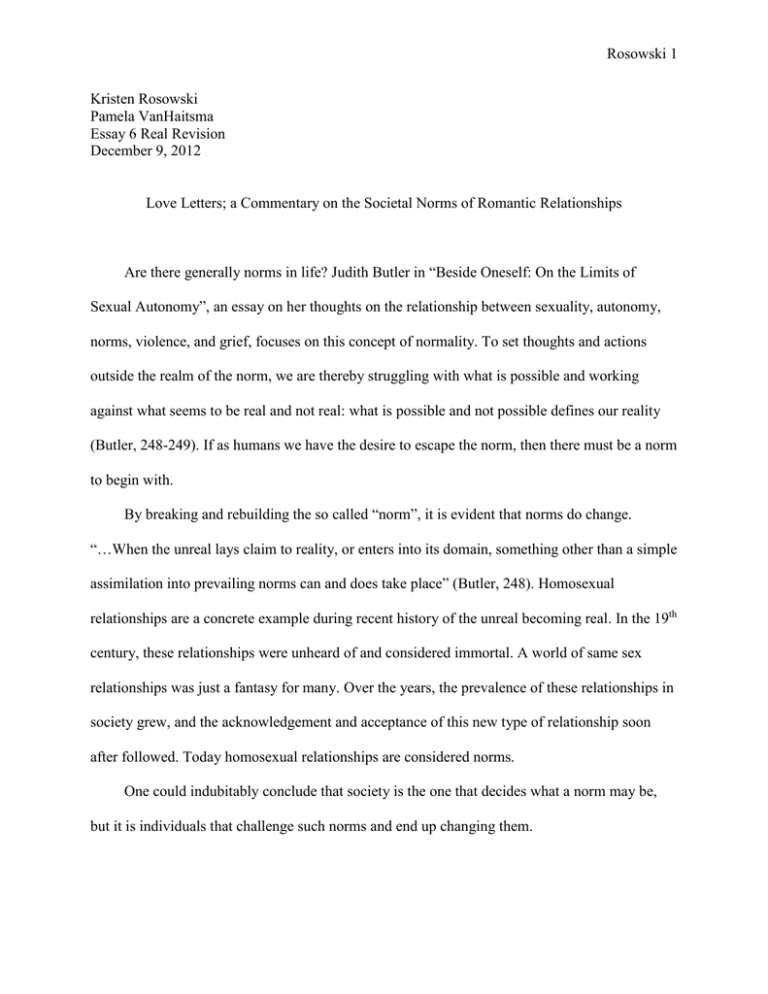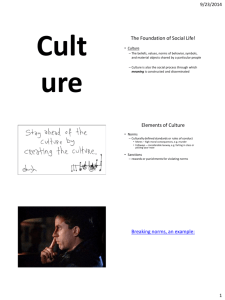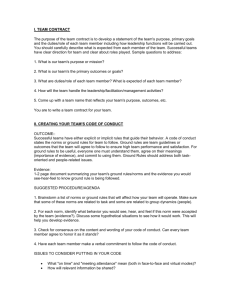
Rosowski 1
Kristen Rosowski
Pamela VanHaitsma
Essay 6 Real Revision
December 9, 2012
Love Letters; a Commentary on the Societal Norms of Romantic Relationships
Are there generally norms in life? Judith Butler in “Beside Oneself: On the Limits of
Sexual Autonomy”, an essay on her thoughts on the relationship between sexuality, autonomy,
norms, violence, and grief, focuses on this concept of normality. To set thoughts and actions
outside the realm of the norm, we are thereby struggling with what is possible and working
against what seems to be real and not real: what is possible and not possible defines our reality
(Butler, 248-249). If as humans we have the desire to escape the norm, then there must be a norm
to begin with.
By breaking and rebuilding the so called “norm”, it is evident that norms do change.
“…When the unreal lays claim to reality, or enters into its domain, something other than a simple
assimilation into prevailing norms can and does take place” (Butler, 248). Homosexual
relationships are a concrete example during recent history of the unreal becoming real. In the 19th
century, these relationships were unheard of and considered immortal. A world of same sex
relationships was just a fantasy for many. Over the years, the prevalence of these relationships in
society grew, and the acknowledgement and acceptance of this new type of relationship soon
after followed. Today homosexual relationships are considered norms.
One could indubitably conclude that society is the one that decides what a norm may be,
but it is individuals that challenge such norms and end up changing them.
Rosowski 2
The book Oranges Are Not the Only Fruit by Jeannette Winterson is about Jeannette, a
young, very religious girl, who falls in love with another girl. Of course, her family and religious
community berate her for her expression of love. The heart of this story is the challenge
Jeannette faces with society accepting her relationship and the power of norms in society. When
the majority of a community agrees that something is wrong, it makes a norm extremely difficult
to go against. When Jeannette is confronted by her pastor about her relationship, one could
conclude that it is Jeannette’s coming out with her homosexuality that brings awareness of
homosexual relationships into existence. One little action can change an entire perspective.
Butler even calls her readers “to challenge the contingent limits of what will and will not be
called reality” (Butler, 249). This keeps fantasy going. If we accept the norm, then there is no
room for improvement, no room to envision ourselves in the future and only a plateau of the
world we inhibit now. One cannot designate the norms of life nor a relationship when they are
ever changing.
Does this also mean that there are norms to other aspects of life as well? Are these norms
inevitable to change as well? “The Sensible Thing” is a love story by F. Scott Fitzgerald
following George O’Kelly, a graduate from MIT who is now an insurance salesman in New
York City, and Jonquil Cary, a wealthier woman living in Tennessee. George receives a letter
from Jonquil about how nervous she is of their relationship; he sends her a telegram, quits his
job, and travels to Tennessee to comfort her. In the end, they break up because of money. After
fifteen months, George makes his way back to Jonquil, wealthier and ready to marry, except she
no longer loves him. The final line in F. Scott Fitzgerald’s short story is, “There are all kinds of
love in the world, but never the same love twice” (Fitzgerald, Chapter 4). Love between parents,
Rosowski 3
children, siblings, friends, and lovers are all different. New relationships will never be like the
old. One cannot place a standard on love.
Yet in the 19th century, The Fashionable American Letter-Writer and Chesterfield’s Art of
Letter Writing say that there is in fact a protocol on how to verbally express your love–on the
appearance of the letter and on what was said in the letter. The manual illustrates the format for
what a love letter should be: “good paper is indispensible... gold-edged, perfumed, or
ornamented in the French style…carefully enveloped, and nicely sealed with a fancy
wafer…neat and elegant” (Chesterfield, 54). The appearance of a letter meant everything. It
meant that the man had money and would be able to support his wife. It meant that the man was
intelligent and had the ability to formulate the correct amount of words to woo a lady. The
templates shown in these two 19th century manuals are beautiful, heartfelt letters, but are they
personal? Do they articulate a man’s love truthfully if they are written by an unknown author?
How can one follow the so called “norm” of a letter if every relationship is different?
Love letters are hieroglyphics for today’s younger generation. Since technology has
overridden the sentimentality of a few words on a piece of paper, I wanted to find a manual on
how one would write a love letter in the 21st century. Pearls of Love: How to Write Love Letters
& Love Poems by Ara John Movsesian outlines the format for writing a love letter: “I. An
opening love paragraph with a greeting. II. A developing love paragraph with a declaration of
love. III. A concluding love paragraph. IV. A closing love paragraph” (Movsesian, 33). In
comparison to The Fashionable American Letter Writer and Chesterfield’s Art of Letter-Writing,
it seems as though this format provides close to no help at all. Morvsesian’s format shows what a
general letter should look like whether it had romantic intentions or not. However, although it
may have no qualitative value, this is a better description of what a love letter should look like.
Rosowski 4
With no formal instructions included in Morvsesian’s format of a love letter, you may be
wondering why I believe it is “better.” But think about it, would you want someone else,
someone who does not know the relationship you have with your partner, to write a love letter
for you? Every love is specific; love is different for every relationship and for each partner in the
relationship. Butler calls her readers to “challenge the contingent limits” of reality and I think
this applies when writing about love. Since the guideline illustrated by Pearls of Love is so
broad, it provides creativity for the writer, a way for him/her to show their lover they are unlike
the rest of the world fighting for their affection. The 19th century love letters place too strict a
boundary on what the writer should or should not write.
Once again, society is the decision maker on what is normal and abnormal. Today’s
younger generation look upon these 19th century love letters as absurd and strange in comparison
to the language of love they so commonly use today. The elderly look at teenager’s use of
language and the world of technology and abbreviated words as absurd and strange as well. Both
of these means of communication were norms during their given time period. The real “norm” is
change.
Rosowski 5
Works Cited
Butler, Judith. “Beside Oneself: On the Limits of Sexual Autonomu.” Ways of Reading:
An Anthology for Writers. Eds. David Bartholomae and Anthony Petrosky. 9th ed.
New York: Bedforf/St. Martin’s, 2011. 240-58. Print.
Chesterfield’s Art of Letter Writing Simplified. New York: Dick & Fitzgerald, 1857. Nietz
Collection, University of Pittsburgh, Digital Research Library. 53-65. Web.
Fitzgerald, F. Scott. "The Sensible Thing." 1969. The Short Stories of F. Scott Fitzgerald. Ed.
Matthew Bruccoli. N.p.: Charles Scribner's Sons, 1989. Print.
Movsesian, Ara John. Pearls of Love: How to Write Love Letters & Love Poems. Fresno: Electric
Ress, 1983. 33-36. Print.
Winterson, Jeanette. Oranges Are Not the Only Fruit. N.p.: Random House, 1985. Print.







